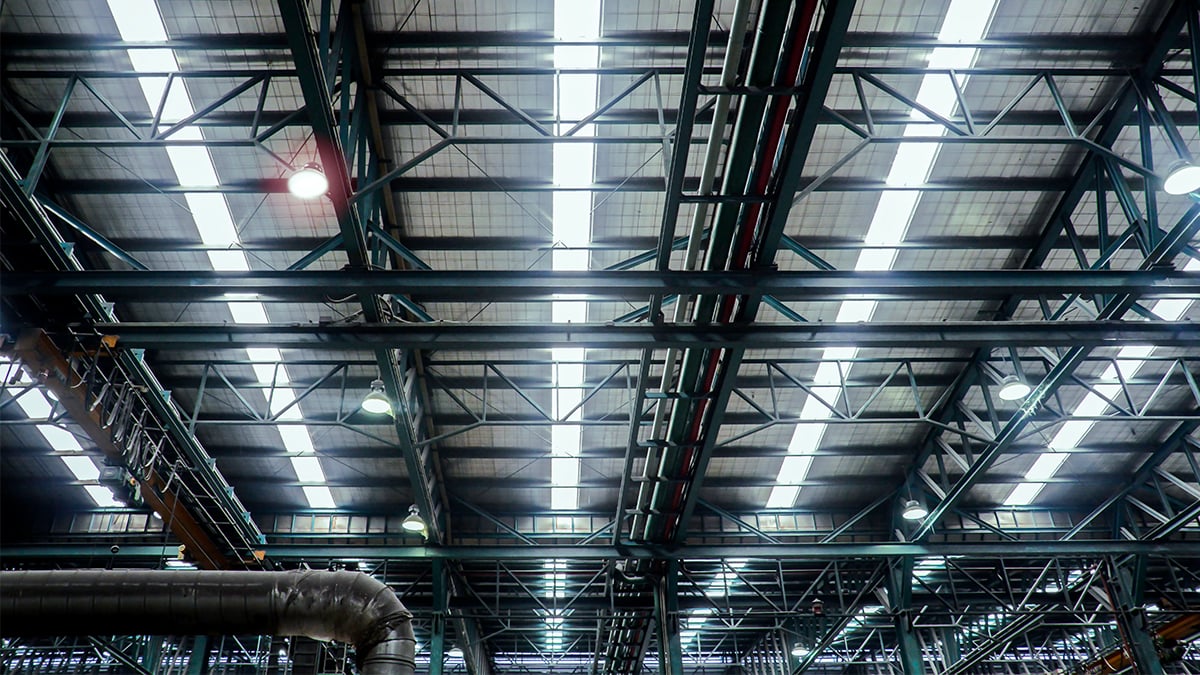Navigating the complexities of OSHA lighting standards (Occupational Safety and Health Administration) can be daunting, but awareness is crucial to ensure a safe and productive environment.
These standards outline essential workplace requirements, dictating the minimum illumination intensities to maintain across various industries.
Understanding and complying with these benchmarks can protect employees from potential hazards and improve overall operational efficiency.
OSHA lighting standards guide
In this complete guide, we will delve into the specifics of OSHA lighting standards, shedding light on various aspects including, but not limited to:
- Different categories of workspaces
- Required lumens per square foot for each
- How these standards have been designed to enhance both safety and productivity
We will also offer practical tips on complying with OSHA lighting standards, along with potential penalties for non-compliance.
This guide aims to provide a comprehensive understanding of OSHA lighting standards, empowering you to create an optimally illuminated, safe, and productive work environment.
Additional reading: best LED lights for warehouse
Need help with OSHA illumination requirements?
If you're struggling to navigate the intricate requirements of OSHA and ANSI lighting standards for industries, FES Lighting is the solution you need. We offer comprehensive lighting solutions tailored to your business needs, ensuring compliance with stringent standards while optimizing energy efficiency and cost savings.
We're a trusted name in the US lighting industry, providing tailored and efficient lighting solutions to businesses across various sectors. Committed to delivering unparalleled service, we combine technical expertise with innovative design to ensure compliance with stringent regulatory standards while realizing energy efficiency and cost savings.
Whether you need an industrial LED upgrade, a retrofit for your existing fixtures, or a complete lighting system designed from scratch, FES Lighting has you covered.
Don't let the complexities of lighting standards slow your business down. Let us illuminate your path to compliance and efficiency.
Get in touch with us today to find out how FES Lighting can help you seamlessly meet the OSHA and ANSI standard for lighting while improving your bottom line.
General OSHA lighting requirements
The general lighting requirements stipulated by OSHA typically apply to most workplaces and form the foundation for more specific industry-based lighting regulations.
These generalized workspace lighting standards offer clear-cut requirements, ranging from general industries, and manufacturing plants, to offices, construction sites, parking lots and more.
Understanding these requirements is crucial to ensuring a well-lit and safe workplace for all.
Additional reading: high bay lighting calculator

OSHA foot candle requirements
OSHA utilizes the measurement of foot candles to delineate its minimum requirements for workplace lighting. The term '"foot candle" refers to the measure of light intensity, or illuminance, in an area, and it plays a critical role in understanding the minimum light intensity demanded of a workplace.
To grasp the concept of foot candle, consider its definition — 1 foot candle equals 1 lumen per square foot. This is the amount of light produced when one lumen is evenly distributed across a one square foot area.
Each industry has its specific minimum foot candle requirements to adhere to, ensuring an optimal level of illumination fitting to their operational nature.
This standard of measurement allows for a precise control over the illumination in a workspace, thereby ensuring compliance with safety regulations, and promoting a conducive environment for all workplace activities.
Additional reading: high bay vs low bay
OSHA emergency lighting requirements
OSHA standards require that emergency lighting is implemented effectively to ensure the safety of employees in situations where regular power sources fail, causing general and task lighting to become unavailable. This can occur during routine power outages or actual emergencies that cause power shutdowns, such as fires.
Emergency light sources are activated in these situations and provide illumination to critical areas such as walkways and exits. This allows workers, such as those in a sewing factory, to exit the premises safely even under challenging conditions.
OSHA mandates that hallways, corridors, and exit-ways should have a minimum of 5 foot-candles of illumination, thereby ensuring that these areas are adequately lit in case of an emergency.
Additional reading: parking lot light repair Dallas
OSHA 1910 lighting requirements
OSHA 1910 lighting standards are a key component of the broader OSHA regulations, primarily addressing electrical wiring installation, including lighting. These standards set forth the minimum requirements for grounding, wire size, and installation locations and procedures, ensuring the safety and productivity of workspaces.
Among the most notable OSHA 1910 lighting requirements are those pertaining to outlets, lighting fixtures, and switches. The standards require that all electrical equipment be installed in a way that reduces potential hazards and ensures the safety of employees.
For example, OSHA mandates that outlets be equipped with a grounding wire and be located in an accessible, safe place.
Additionally, all lighting fixtures must be installed in compliance with the National Electrical Code (NEC). This code provides detailed instructions on how to install wiring and lighting safely.
If you're looking for an LED lighting expert that ensures your lighting adheres to professional standards, get in touch with us today.
Specific OSHA workplace lighting requirements
The American National Standard A11.1-1965, R1970 outlines the minimum lighting requirements for various types of workspaces to ensure optimal safety and productivity.
This includes workplace lighting standards and industrial lighting standards, both of which are designed to ensure that employees have a well-lit and safe working environment. This is especially crucial in industries where accidents can have severe consequences, such as the oil and gas industry.
In the following sections, we'll take a look at each of the proper lighting requirements as they apply in certain industries.
Additional reading: mall lighting
OSHA lighting standards for general industry
OSHA's general industry lighting requirements are:
- Offices, First Aid Stations, and Infirmaries: The minimum brightness stands at 30 foot-candles. This level of illumination promotes visibility, especially in areas where accurate color perception and visual acuity are critical.
- General Construction Plants and Shops: This includes retail lighting solutions, active storerooms, indoor bathrooms, and mess rooms, which require at least 10 foot-candles of light. This level of lighting aids in the clear visibility of objects and helps avoid potential accidents.
- Indoor Construction Areas: Other areas, such as warehouses, corridors, hallways, and exit ways, must have at least 5 foot-candles of illumination. This level of light also applies to underground work areas, such as tunnels and shafts.
- Outdoor Work Areas: Areas like concrete placement areas, waste areas, loading platforms, active storage areas, field maintenance areas, refueling areas, and excavation and waste areas have a minimum lighting standard of 3 foot-candles.
One thing to keep in mind is that these requirements may overlap, as certain areas may be both classified as indoor and outdoor work areas.
For example, in the case of LED lights for convenience stores, the area inside the store would be considered an indoor work area, while the gas pump area outside would be classified as an outdoor work area.
It's important to accurately assess and designate the appropriate lighting standards for each specific location.
Additional reading: are fluorescent lights bad for you
OSHA lighting standards for manufacturing
In the case of manufacturing facilities, OSHA leans more towards lux measurements instead of foot-candles.

Lux, which is the measure of illuminance in metric units, is calculated by multiplying the number of lumens per square meter (lm/m2) by 0.0929 to obtain foot-candles.
Example: If the LED factory lighting standards for a manufacturing plant is set at 750 lux, then it would equate to approximately 70 foot-candles (750 x 0.0929 = 69.675).
The following are some of the OSHA workplace lighting standards applicable to manufacturing facilities:
- Factories, Workshops, and Auto Shops: In these more industrious settings, where machinery and equipment are regularly used, a higher light intensity is necessary. The standard set by OSHA for these areas is 750 lux, ensuring that workers can operate machinery safely and spot any potential hazards promptly.
- Warehouse Loading Bays and Areas of Ingress/Egress: OSHA warehouse lighting requirements are set to 300-400 lux. Adequate lighting in these areas is crucial to prevent accidents during the loading and unloading of goods and materials.
- Lobbies, Corridors, Stairwells, and Common Areas: These transit areas require a lower level of brightness; hence, the standard is set at 200 lux.
- Warehouse Aisles: The aisles in warehouses where goods are stored are required to have a lighting standard of 100-200 lux. This level of brightness is sufficient for workers to locate and retrieve items safely.
OSHA office lighting standards
OSHA lighting standards for office spaces are meticulously designed, taking into account the specifics of an office environment.

Unlike industrial spaces, an office setting presents unique challenges arising from tasks like computer usage, reading, or detail-oriented work. The right balance of illumination is crucial as excessive bright light affects and strains the eyes causing discomfort to employees.
OSHA requires optimal office lighting that harmonizes with the rest of the environment:
- Diffuse Lighting: Align rows of diffuse lights in parallel to the workstations' line of sight. This arrangement minimizes glare, providing comfortable visibility for tasks.
- Supplemental Lighting: Desks and other task areas should have supplemental lighting to provide sufficient illumination for specific activities.
- Blinds on Windows: Install blinds on exterior windows to manage natural light effectively. Vertical blinds should be used for windows on the east and west sides, while horizontal blinds should be used for windows facing north and south.
- Computer Placement: Computers should be arranged such that the outside light hits the screen at a right angle, reducing glare and enhancing visibility.
- Wall and Ceiling Colors: Choose light and matte finishes for wall and ceiling paint to soften the reflection of light, reduce contrast, and minimize glare.
OSHA requirements, when implemented correctly, can significantly enhance the comfort and productivity of employees by providing a well-lit, strain-free work environment.
OSHA parking lot lighting requirements
OSHA also has specific guidelines for parking lot illumination to ensure safety and prevent accidents in these areas.
The parking lot lighting requirements OSHA specifies are designed to provide sufficient illumination for both employees and visitors.
While OSHA does not directly stipulate the minimum foot-candles required, it does state, under the General Duty Clause, that employers have an inherent responsibility to provide a safe working environment. As such, it is recommended that parking areas have lighting that maintains a minimum of 1 foot-candles throughout.
Note that this lighting requirement can vary depending on the activity level of the parking lot. For instance, a corporation's office parking garage lights may be less intense compared to visitor parking areas or loading docks.
In high activity areas, the minimum lighting requirement can be as high as 5 foot-candles.
One thing that OSHA does require is that lighting fixtures should be strategically placed to illuminate wide areas and avoid casting shadows, enhancing visibility.
Moreover, the chosen lighting should be durable and weather resistant, considering the outdoor nature of most parking lots.
OSHA construction lighting requirements
OSHA 1926.56 temporary lighting requirements for construction areas vary for the area or operation:
- General Construction Area Lighting: A minimum of 5 foot-candles is required for general construction area lighting. This level of brightness facilitates safe and efficient work in these areas.
- General Construction Areas, Concrete Placement, Excavation and Waste Areas, Access Ways, Active Storage Areas, Loading Platforms, Refueling, and Field Maintenance Areas: These areas should have a minimum illumination of 3 foot-candles.
- Indoor Areas (Warehouses, Corridors, Hallways, and Exit ways): These indoor construction areas must maintain a minimum lighting standard of 5 foot-candles.
- Tunnels, Shafts, and General Underground Work Areas: For these areas, a minimum of 5 foot-candles is set. However, during drilling, mucking, and scaling at tunnel and shaft headings, a minimum of 10 foot-candles is required. Bureau of Mines approved cap lights are acceptable for use in these areas.
- General Construction Plant and Shops: These areas need to maintain a lighting standard of 10 foot-candles.
- First Aid Stations, Infirmaries, and Offices: A higher standard of illumination is set for these areas at 30 foot-candles, prioritizing visibility for detailed tasks.

Consequences of Non-Compliance with OSHA Lighting Standards
Despite the explicit delineation of OSHA lighting standards, some companies may overlook their compliance obligations, thereby exposing themselves to significant risks.
OSHA inspectors are meticulous and relentless in their pursuit of safety standards within the workplace. Any deviation or non-adherence to these regulations, including those related to commercial LED lighting solutions, is likely to be detected, leading to substantial penalties.
Companies that fail to comply with the guidelines should anticipate citations carrying hefty fines. As of January 15, 2024, the penalties for workplace lighting violations include:
- Serious Violations: $16,131 for each violation.
- Failure to Resolve Prior Violation: $16,131 will be charged per day after the abatement date.
- Willful or Repeated Violation: $161,323 for each violation.
Beyond the monetary fines associated with OSHA citations, non-compliance with workplace lighting requirements can result in severe collateral damages. These can prove to be costly, potentially threatening the viability of the business. Some of the consequential risks include:
- Imposition of additional sanctions by other agencies such as the Environmental Protection Agency (EPA) or Department of Labor (DOL)
- Simultaneous inspections leading to repeated citations across multiple locations, exacerbating the financial burden
- Detrimental impact on the company's reputation, resulting in the loss of contracts, projects, and future business prospects
- Legal liabilities including workers' compensation, personal injury, and potential wrongful death lawsuits
- Allegations of intentional disregard, potentially leading to punitive damages and criminal charges.
Key takeaways on OSHA light requirements
As you've seen, OSHA lighting requirements are comprehensive and meticulously designed, covering various work environments like offices, warehouses, construction sites, and parking lots. They aim to ensure safe and efficient execution of tasks, employee comfort, and overall workplace safety.
Key points to remember are:
- Maintain prescribed foot-candles: Compliance with the minimum illumination intensities dictated by OSHA is crucial.
- Manage glare and contrast: Especially in office environments, managing glare and contrast is essential to prevent eye strain. This involves careful placement of computers, effective use of blinds, and the choice of wall and ceiling colors.
- Use of durable and weather-resistant fixtures: Particularly for outdoor areas like parking lots, the chosen lighting must resist weather conditions for safety and longevity.
Are you serious about improving your workplace lighting standards?
Contact FES Lighting today for a free LED lights audit and let us help you ensure full compliance with OSHA's guidelines, enhancing productivity and safety while avoiding non-compliance penalties.



%20(1).png?width=1080&height=1080&name=FES-Ebook-1%20(1)%20(1).png)